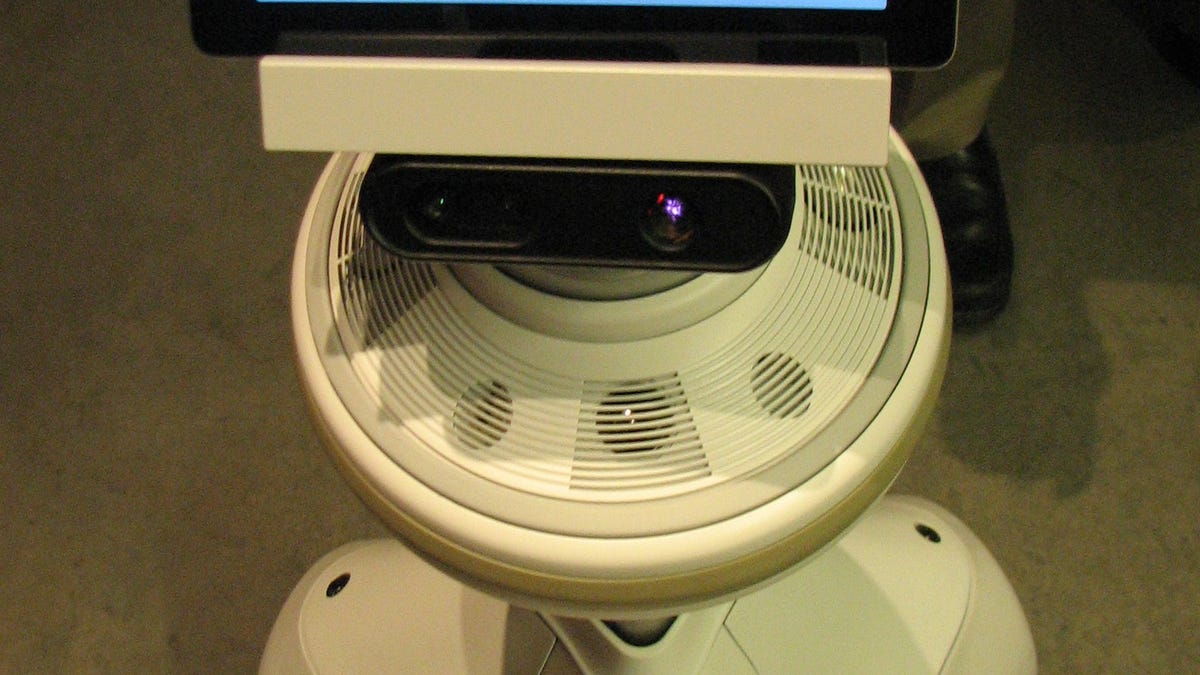The robodoctor will see you now
Robots in the form of linen-carrying droids and prosthetics are starting to slowly open the path for robotics in health care. Can in-home robots help care for elderly people, too?

Baby boomers -- and their children caretakers -- may need to warm up to robots as they get older.
In the years ahead, robots could operate in homes to care for elderly people, helping with tasks such as dispensing meds or running virtual doctor's visits. Already, other forms of robots, such as droid-like machines in hospitals or prosthetics, are starting to make a mark in health care.
Many robotics companies are gravitating toward health care which they see as a potential high-volume consumer market for robots. The primary hurdle is finding solid business plans for getting robots in the door, say experts.
"Extending independent living at home (for the elderly) will ultimately turn out to be the killer app for robots," said Colin Angle, the CEO of iRobot, at an event organized by the MIT Enterprise Forum this week. "The challenge is that robotics is so exciting, you have massive companies investing millions of dollars building cool as opposed to building value."
iRobot is best known for its Roomba vacuum cleaner and makes the bulk of its money from defense agencies with an array of robots used to neutralize bombs.
It's one of many companies betting that health care is an industry ready for robots. iRobot invested $6 million in inTouch Health, which makes a mobile robot used for telemedicine, and its latest robot, Ava, is targeted at health care professionals.
Both inTouch Health's PR6 robot and Ava stand vertically and move around on wheels. On top of each of the pedestal-shaped machines is a screen that allows for videoconferencing or a touch-screen interface for operating the machine.
A network of hospitals in Michigan operates as a hub and spoke where the PR6 robots at local hospitals allow a stroke specialist in a central location to navigate a hospital and start a videoconference to diagnose the type of stroke a person may have. It's also been tested to allow doctors to do the rounds at a hospital from a remote location.
This type of robot enables other telemedicine applications, such as translating for patients in a remote location. Equipped with an array of sensors, Ava can also create a map of a hospital and autonomously navigate busy hospital hallways to fetch and deliver goods.
"What we're seeing today is the beginnings of robots in telemedicine that are not experiments, but venture capital businesses, which is what you need to make it viable and scalable," Angle said.
In-home care is a pressing social problem and when it comes to helping an aging person at home, the list of items a robot could do is long, he notes. It could include cleaning the house, stocking the kitchen with food, paying bills, medical reminders, and monitoring people to reduce the risk of falling.
Delivery droids
The technology to deploy robots to fetch medicines for nurses, aid in surgery, or do telediagnosis is already available or in use. But the cost of these machines is far too high for mass adoption. Another concern is liability: worries that a robotic wheelchair, for example, might cause someone to fall down the stairs has kept that technology from progressing outside research work, said Holly Yanco, professor and the associate chair of computing at the University of Massachusetts in Lowell.
Now, advances in technology and smarter entrepreneurs are leading to robotic systems which will be less expensive than the few products now on the market, said Steve Kelly, the president of Myomo, which makes a robotic brace to help stroke victims regain motion in their arms.
For one thing, engineers have many more tools at their disposal. Sensors, including the sensor on Microsoft's Kinect game controller, are getting cheaper and other basic communications technologies from the mobile world, such as voice recognition and videoconferencing, open up more possibilities.
"There's a whole wave of new products coming out in the next few years that changes the cost curve from very expensive equipment where you maybe have one in a hospital to where you might have five community hospitals," Kelly said.
New business models make a difference, too. Children's Hospital, in the largest pilot program of its kind in the U.S., has purchased five wheeled Vgo robots to monitor children after treatment, a model where individuals essentially rent an in-home robot. The remotely controlled device allows doctors to do video consultations, saving parents from bringing children back in for every checkup.
Pittsburgh-based Aethon leased 20 droid-like robots to a hospitals in California to carry hospital gear around, a model which avoids the full upfront cost. The hospital purchased the machines when it moved to a larger hospital which would have required hiring staff just to move equipment around, according to a Wall Street Journal article (subscription required).
It's still not clear which applications will allow robotics to get a deeper foothold in the industry. Other big unknowns are the time to get FDA approval, which will be reimbursed by insurance companies, and privacy issues. But the ones that do get adopted may not end up being called "robots," much the way an MRI imaging machine isn't called a computer, said Kelly.
"This is something that runs along a 20-year adoption curve not unlike a computer," he said. "Some will be outright robots but others will be embedded like they are in prosthetics."

